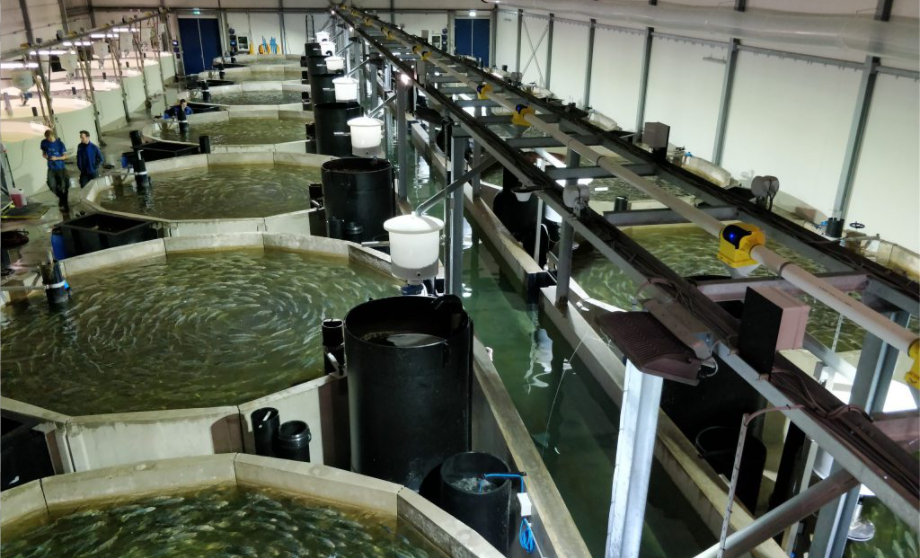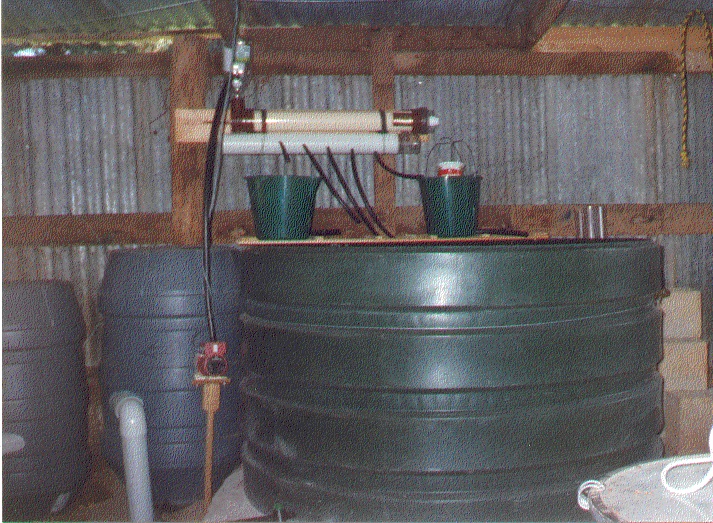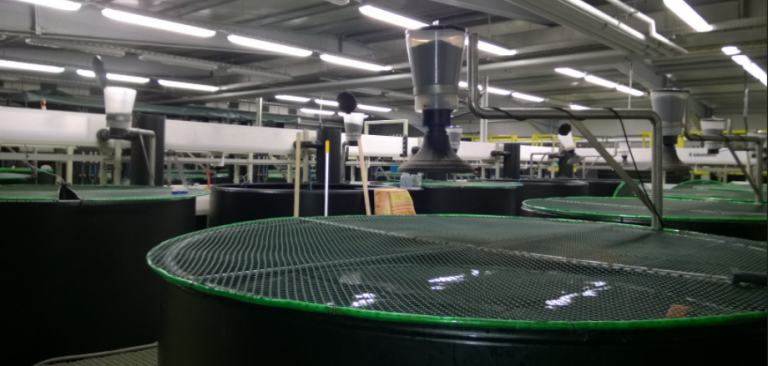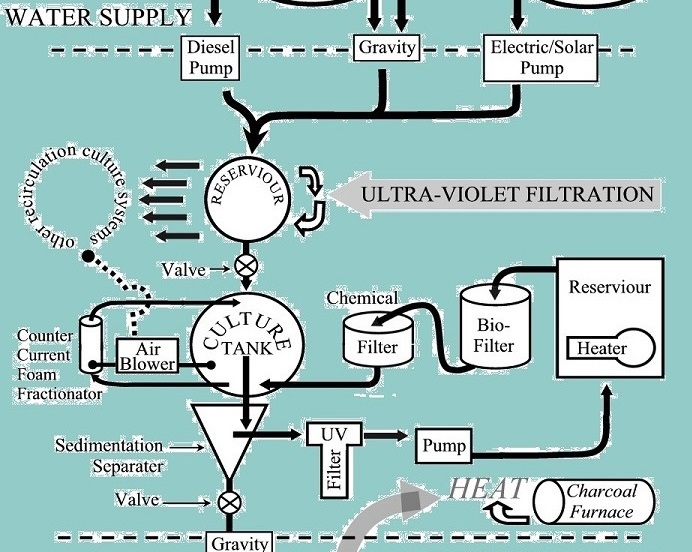Recirculating Aquaculture Systems
The culture of aquatic animals in tanks is a vastly different experience to pond production. With the potential of tanks to increase stocking density beyond purpose built ponds is the demand of additional technology and management. The desired outcomes of using tanks are water recycling and enhanced environmental control. Smaller volumes of water are used with tanks, necessitating the incorporation of various filtration equipment and pumps to recirculate water from the tank and return it cleaner. Such recirculating aquaculture systems can then be housed in sheds for improved production control including stocking, feeding, grading and harvesting. Observational monitoring is enormously easier with tanks; however, the disadvantage is brief reaction times if things go wrong, where water quality parameters can deteriorate rapidly.

Therefore, stocking density correlates to the quality of the system. Maximum intensive stocking stipulates the best possible equipment functioning efficiently and effectively. More than a great deal of confidence is demanded with intensive systems.
Confidence is of course demanded from skilled operation of any indoor intensive production system, inclusive of the understanding that fish growth with increasing system demand is a dynamic procedure. The recirculating fish culture system can be considered an excessive fish-bowl septic system with often substantial amounts of effluent waste to process.
Tanks and associated filtration equipment are used for varying purposes, predominantly for quarantine, acclimation, holding, purging, as well as grow-out. The designs of these systems are often complicated and diverse depending on the intended use and engineering styles. Systems can be purchased from aquaculture suppliers providing complete ‘turn-key’ production systems. They also supply a range of equipment, often available through alternative sources, enabling farmer discretion in construction.
The traditional water filtration components to choose from when establishing a recirculating system include centrifugal particulate separators, foam fractionation, bio-filtration, ultra-violet irradiation and/or ozone gas generators, and mechanical and chemical filtration.
Options with brand choice and supplier or self-designed equipment are widespread with differing configuration formations. Tanks, for example, are available in a wide selection of volumes and shapes, often centrally draining, and can be constructed in virtually any size from cement and/or potable plastic.

Aquaculture is one industry in Australia with high requirements and demands for water. Being one of the driest continents on Earth, water conservation and re-use must play significantly greater importance in regards to farming techniques. As the industry expands in response to greater demand, primarily due to increasing population, so will its requirements for water.

